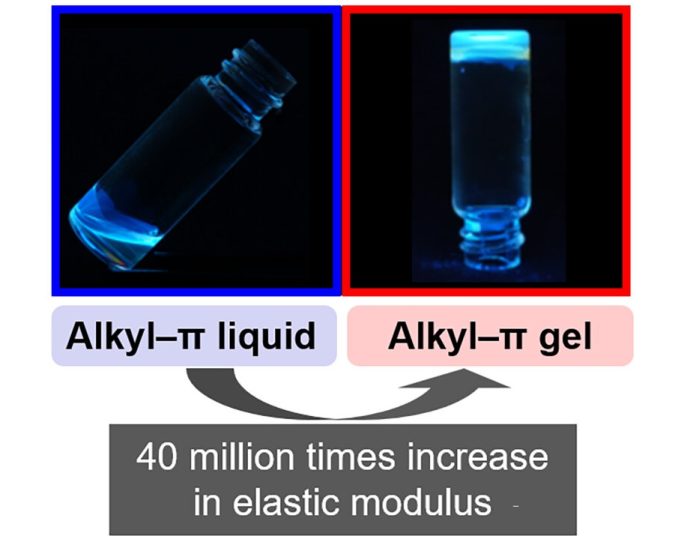
A team of researchers from NIMS (National Institute for Materials Science), Hokkaido University, and Meiji Pharmaceutical University has developed a groundbreaking gel electret that can retain a large electrostatic charge.
They combined this gel with highly flexible electrodes to create a sensor capable of detecting low-frequency vibrations, such as those generated by human movement, and converting them into voltage signals.
This new device holds great potential for use in wearable health care sensors.
The study, published in the journal Angewandte Chemie International Edition, highlights the increasing interest in developing soft, lightweight, power-generating materials for applications in health care and robotics.
Electret materials, which can stably retain electrostatic charge, are particularly promising for creating vibration-powered devices that do not require external power sources.
NIMS has been at the forefront of developing a special type of liquid called alkyl–π liquid, made from a π-conjugated dye moiety and flexible alkyl chains.
These liquids have excellent charge retention properties and can be easily applied to other materials.
However, when combined with electrodes to create flexible devices, these liquids have posed challenges due to leakage and the need for better electrostatic charge retention.
To address these issues, the research team created an alkyl–π gel by adding a small amount of a gel-forming agent to the alkyl–π liquid. This new gel has an elastic storage modulus 40 million times greater than the liquid, making it much more stable and easier to seal.
The gel-electret, created by charging this gel, retained 24% more electrostatic charge compared to the original liquid form.
The team then paired this improved gel-electret with flexible electrodes to build a vibration sensor. This sensor could detect vibrations as low as 17 Hz and convert them into an output voltage of 600 mV, which is 83% higher than that produced by an alkyl–π liquid electret-based sensor.
Looking ahead, the researchers aim to further enhance the sensor’s ability to respond to subtle vibrations and different types of strain by improving the gel’s charge capacity, charge life, and strength.
Additionally, since the gel is recyclable and reusable, it could contribute to promoting a circular economy by reducing waste and enabling sustainable use of materials.
This innovative development in gel electret technology marks a significant step forward in the creation of flexible, power-generating materials for wearable health care sensors and other soft electronics.
The ability to generate power from human motion and other low-frequency vibrations without external power sources opens up exciting possibilities for the future of health care and robotics.



